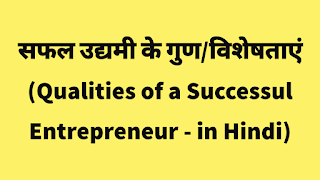कोऑपरेटिव सोसाइटी (सहकारी समिति) किसे कहते है?
कोआपरेटिव सोसाइटी एक एसी संस्था होती है जो मुनाफा कमा ने के लिए व्यवसाय नही करती। कोआपरेटिव सोसाइटी सदस्यों के फायदे के लिए काम करती है।
ऐसी संस्था का मुख्य हेतु अपने सदस्यों की सहायता करना होता है। कोआपरेटिव सोसाइटी बनाने के लिए काम से कम 10 मेम्बेर्स होने चाहिए। 10 के ऊपर आप जितने चाहो उतने सदस्य बना सकते हो।
कोआपरेटिव सोसाइटी सभी सदस्यों के पारस्परिक लाभ के लिए बनाई जाती है।
उदाहरण के लिए, किसान एक साथ आ सकते हैं और कोआपरेटिव सोसाइटी बनाकर संयुक्त रूप से काम कर सकते हैं। जब वे एक साथ काम करेंगे तो उनके पास फटीलीज़र्स,यूरिया आदि खरीदने के लिए सौदेबाजी की बेहतर शक्ति होगी। वे अपने उत्पन्दनो को अछी कीमत पर बेच सकेंगें।
कोआपरेटिव सोसाइटी के प्रकार-
1. उपभोक्ता (Consumer) कोआपरेटिव सोसाइटी-
यह एक ऐसा संगठन होता है जो थोक में या तो निर्माता से या हॉलसेलर से सामान खरीदता है और उन सामानों को अपने सदस्यों को कम मात्रा में और बहुत ही उचित दर पर बेचता है।
इसलिए इसके सदस्यो को बाजार दर की तुलना में सस्ती दर पर सामान मिलता है।
सदस्यों को सोसाइटी द्वारा किए गए सालाना मुनाफे से बोनस का भुगतान भी किया जाता है।
2. क्रेडिट कोआपरेटिव सोसाइटी (सहकारी वित्तीय समिति)
इस सोसाइटी का मुख्य उद्देश्य सदस्यों को कम ब्याज पर ऋण देना होता है। क्रेडिट कोआपरेटिव सोसाइटी का उद्देश्य अपने सदस्यों को वित्तीय सहायता प्रदान करने का होता है, जब उन्हें उसकी आवश्यकता होती है।
3 मार्केटिंग कोआपरेटिव सोसाइटी
यह एक ऐसी सोसाइटी होती है जो अपने सदस्यों को विपणन सहायता प्रदान करती हैं।
सदस्यों का उत्पादन मार्केटिंग कोआपरेटिव सोसाइटी के माध्यम से एकत्रित करके केंद्रीय रूप से बेचा जाता है।
मार्केटिंग कोआपरेटिव सोसाइटी अपने सदस्यों के लिए सभी विपणन कार्य जैसे ग्रेडिंग, ब्रांडिंग, पैकेजिंग, विज्ञापन, परिवहन इत्यादि करती है।
4 हाउसिंग कोआपरेटिव सोसाइटी
यह एक ऐसी संस्था होती है जिसमे सारे सदस्य एक साथ आते हैं और भूमि का एक टुकड़ा खरीदते हैं और फिर उसे एक आवासीय इमारत के रूप में विकसित करते हैं। इसके बाद इमारत के फ्लैट्स सदस्यों को आवंटित किए जाते हैं
5 प्रोड्यूसर्स कोआपरेटिव सोसाइटी
यह संस्था छोटे उत्पादकों द्वारा बनाई जाती है।
प्रोड्यूसर्स कोआपरेटिव सोसाइटी अपने सदस्यों को आधुनिक उपकरण और आधुनिक तकनीक प्रदान करती हैं ताकि वे बड़े उत्पादकों के साथ प्रतिस्पर्धा कर सकें।

